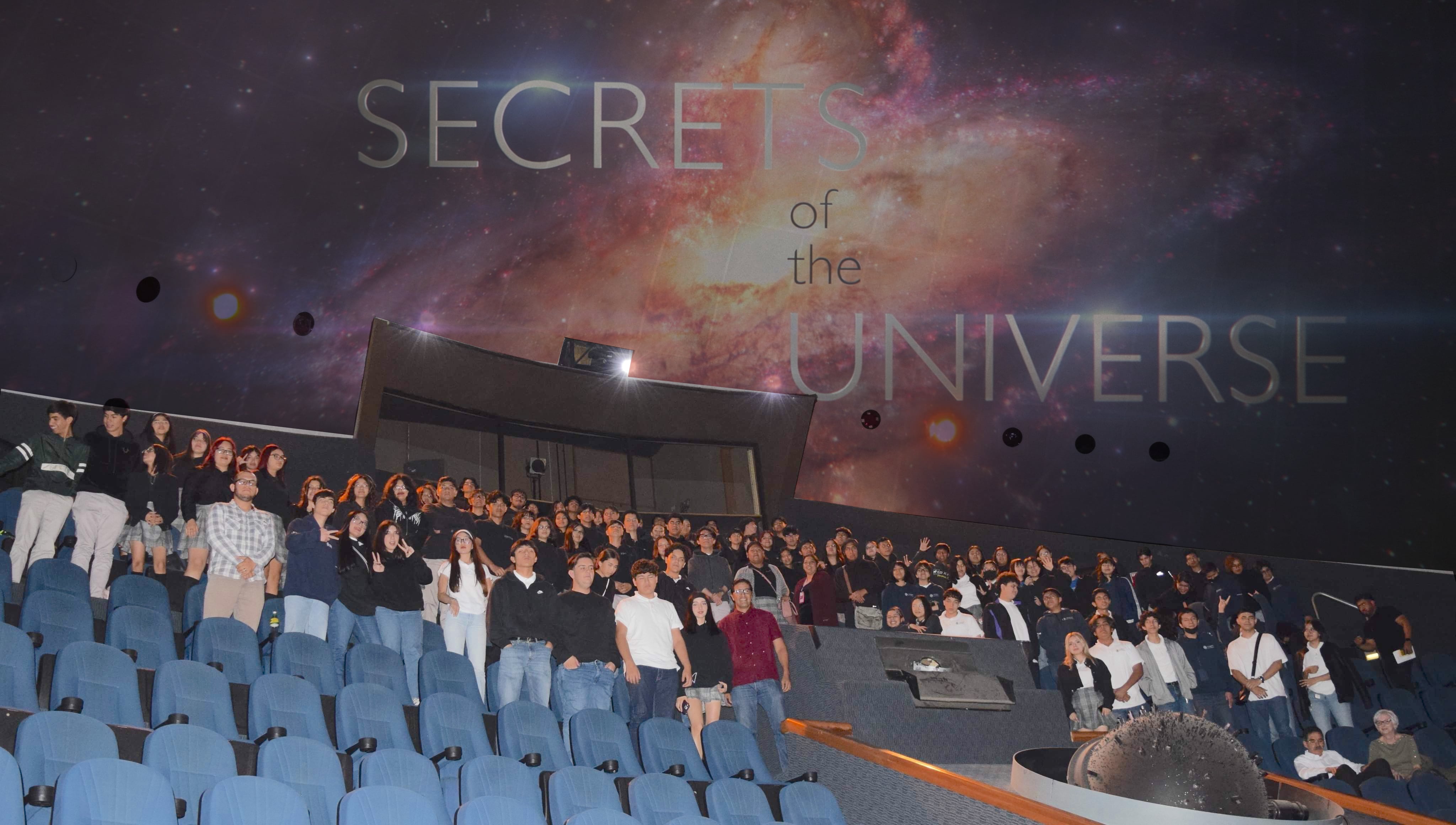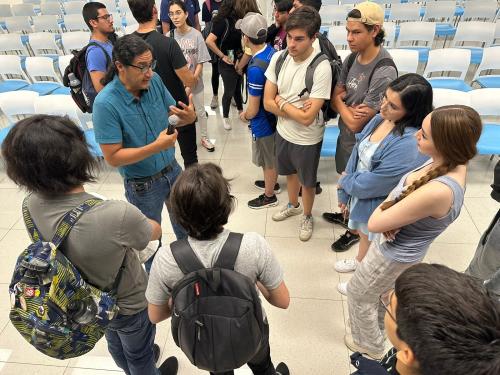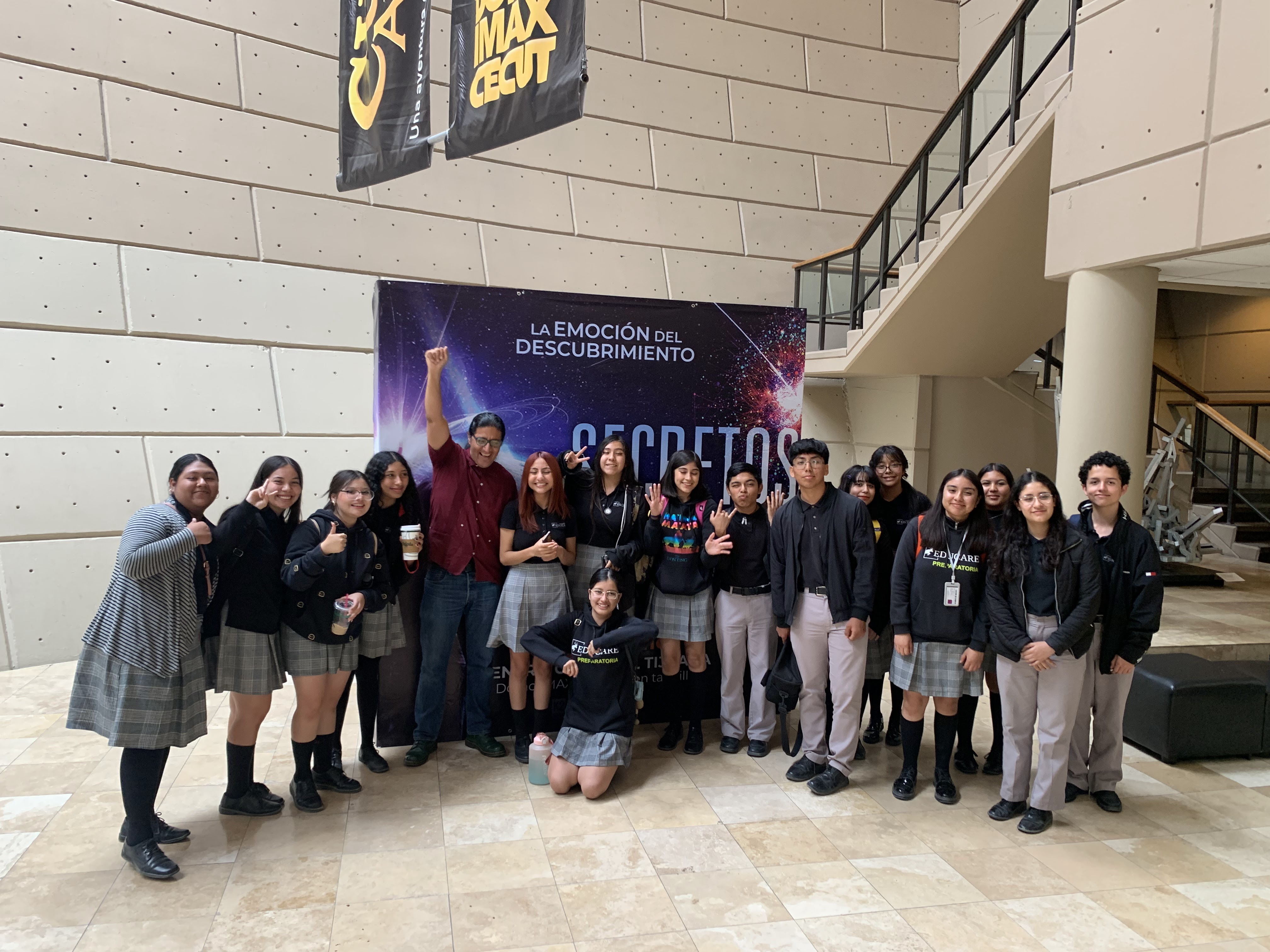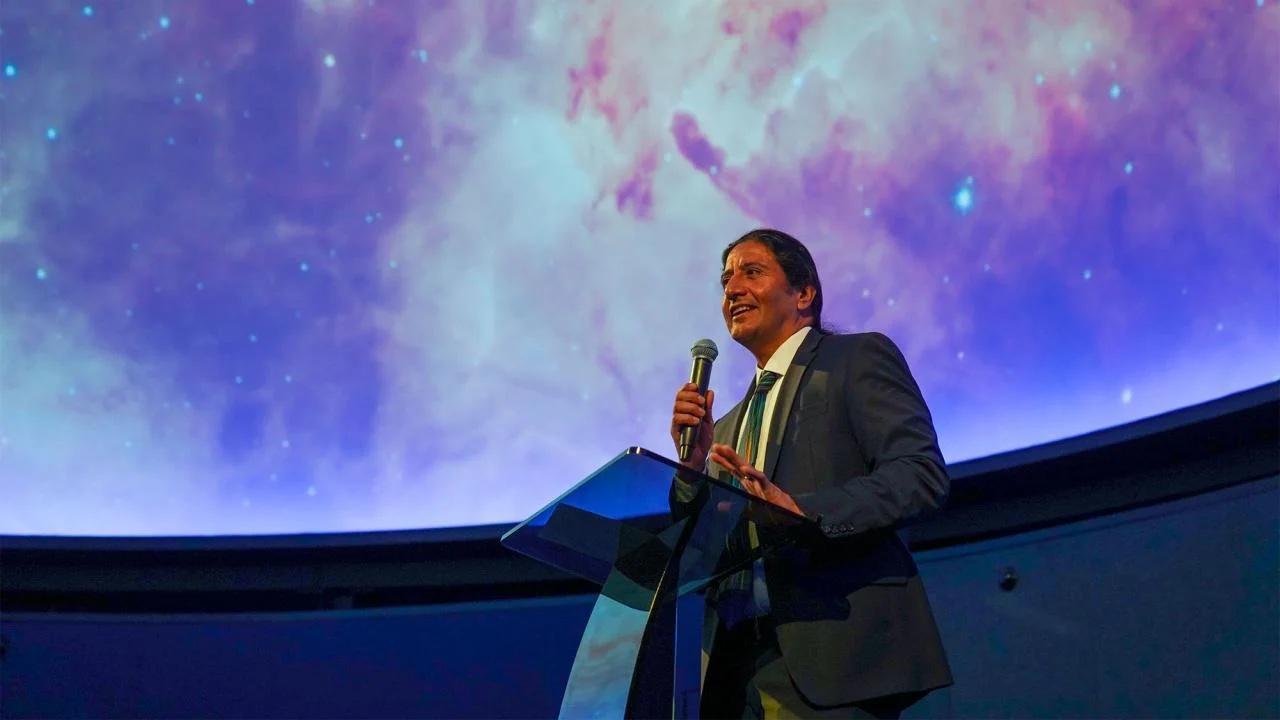Quick Summary
- Returns to his alma mater
Before he was a UC Davis professor studying the subatomic particles underlying the universe, Manuel Calderón de la Barca Sánchez was an engineering physics student at the Monterrey Institute of Technology and Higher Education (ITESM) in Mexico. There, he learned about quantum mechanics — that there were physicists around the globe smashing particles together to learn about the origin of the universe.
Nearly 30 years later, Calderón de la Barca Sánchez returned to his alma mater to host screenings of Secrets of the Universe, an IMAX film that explores the formation of the universe through the eyes of Aggie researchers. Calderón de la Barca Sánchez stars in the film and serves as its narrator. The 42-minute documentary follows the research team as they prepare to collect data from an experiment at the Large Hadron Collider in Switzerland.
“I’m an alumnus who was once in their shoes, in the same classroom, sitting at the same desk. What I’m doing is what they can do.” — Calderón de la Barca Sánchez
The film was shown this week in Monterrey at Papalote Museo del Niño Monterrey to over 2,000 high school students from ITESM's Prepa Tec and to the public. Calderón de la Barca Sánchez hopes the film will inspire students to pursue STEM education and careers.
“I’m an alumnus who was once in their shoes, in the same classroom, sitting at the same desk,” said Calderón de la Barca Sánchez. “What I’m doing is what they can do.”

Calderón de la Barca Sánchez poses with students at a recent screening of ‘Secrets of the Universe’ at the Tijuana Cultural Center in Mexico. (Courtesy of Manuel Calderón de la Barca Sánchez)
Recreating the early universe
As a physics professor in the College of Letters and Science at UC Davis, Calderón de la Barca Sánchez studies the behavior of subatomic particles, such as quarks and gluons. His research reaches back to the origins of the universe with experiments focused on recreating high-temperature environments like the one that occurred one-millionth of a second after the Big Bang.
By creating a space 100,000 times hotter than the sun’s core, Calderón de la Barca Sánchez and his colleagues can strip atoms of their electrical ties.
“In the sun, atoms melt,” Calderón de la Barca Sánchez said. “But when we smash nuclei in our experiments, the nucleus of the atom — its even tinier and much denser core — melts.”
At these temperatures, electrons, protons and neutrons — the ingredients of the atom — melt away, revealing information about the nuclear force that binds their most elementary subatomic particles. These particles, the earliest known in the universe, made up the first state of matter after the Big Bang: the quark-gluon plasma.
Doing such research requires heavy equipment, like the Large Hadron Collider, the world’s most powerful particle accelerator; an imaginative mind to visualize the invisible; and a love for the natural world.
Origins of a physicist
Calderón de la Barca Sánchez’s drive to share and democratize science stems from his upbringing in Mexico City. His parents encouraged intellectual exploration from an early age, instilling in him a love for reading that eventually led to an interest in etymology, the study of the origin of words.

(Courtesy of Manuel Calderón de la Barca Sánchez)
But Calderón de la Barca Sánchez was also passionate about video games and computer science, writing programs on the Commodore 64 his parents bought him. Initially, he wanted to study computer science in college, but as he learned more about mathematics and physics, he discovered that the subjects weren’t just a means to solve problems on a test. They were ways to describe nature.
“We can understand how the planets move around the sun using the same ideas that you use to understand how we throw a ball,” Calderón de la Barca Sánchez said.
The universality of these concepts fascinated him and led him to study engineering physics. While studying at the Monterrey Institute of Technology and Higher Education and through an opportunity with the Mexican Physical Society, he participated in a summer internship at the European Organization for Nuclear Research (CERN), home to the Large Hadron Collider.
“That’s what really opened the doors for me,” said Calderón de la Barca Sánchez, who went on to earn a doctorate from Yale University. “All of a sudden, I’m at the biggest laboratory for particle physics in the world and talking with faculty from all sorts of different schools.”
Inspiring the next generation of Aggies
At UC Davis, Calderón de la Barca Sánchez emphasizes the importance of undergraduate research experiences, like his own at CERN, to his students.
“That just completely changed the panorama and allowed me to come to the United States,” he said. “I’ve been doing research here ever since.”

Calderón de la Barca Sánchez hopes that screenings of ‘Secrets of the Universe’ will inspire students to pursue STEM education and careers. (Courtesy of Manuel Calderón de la Barca Sánchez)
By screening Secrets of the Universe, Calderón de la Barca Sánchez hopes to incite student interest in the unique research opportunities at UC Davis, inspiring them to pursue their studies as an Aggie.
“That’s really important for undergraduates or prospective students to realize,” he said. “Whether you’re coming from the U.S. or outside the U.S., that undergrad research experience component is available to UC Davis students.”
Greg Watry is a content strategist & writer for the College of Letters and Science at UC Davis
